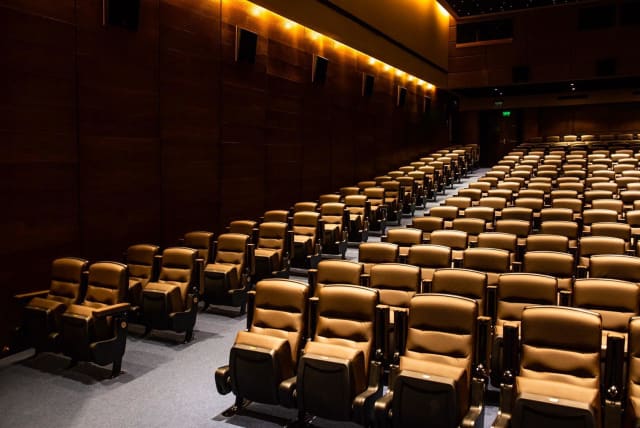The earliest known artwork by Jerusalem-born Israeli artist Moshe Castel (1909-1991) is a self-portrait that he created in 1926, aged no more than 17, during his studies at the Bezalel Academy of Arts and Design. This piece is part of the Moshe Castel Museum’s permanent exhibition. Our collection also boasts another remarkable self-portrait by Castel, painted during his stay in Paris, in 1935.
One of Castel’s best-known works is Tablets of Law (1958), whose wavy lines serve as “ripples” of the Ten Commandments, echoing the biblical revelation in which they were given (Exodus 24:12).
The museum, in Ma’aleh Adumim, is currently hosting an exhibition dedicated exclusively to self-portraits by the best Israeli artists – both Castel’s contemporaries and our own.
A new art exhibit in Ma'aleh Adumim
Centuries had to pass before artists who had not belonged to the upper strata of medieval European societies could cement their independent status and secure the recognition of their right to immortalize themselves in self-portraits, thereby keeping their memory alive for posterity.
The State of Israel has been engaged in a similar struggle for the legitimacy of its existence as a Jewish and democratic state. Generally, art gives us an additional prism to view the reality in which we live. This is a unique exhibition, held in challenging times, as we contemplate the portrait of our country, examining in minute detail the changes that it has undergone since its establishment.
The exhibition serves as a capstone to all the activities and subjects that we have engaged with over the past year. We have held personal exhibitions of two unique artists, Pinchas Shaar (on the centenary of his birth) and Baruch Elron (on the occasion of his 90th birthday); the self-portraits of both men are featured in this exhibition.
This year, we intend to open exhibitions of Yitzhak Alexander Frenkel (Frenel), on the occasion of the 125th anniversary of his birth; Naftali Bezem, on the centenary of his birth; and Yosef Ostrovsky, on the occasion of his 90th birthday. Their self-portraits, too, form part of the current exhibition.
Each of these five painters is a sublimely gifted artist, with a unique and unmistakable style. We are proud and excited to convey our appreciation for them via these exhibitions at our museum, returning their works to their rightful place of honor.
FURTHERMORE, THIS year we have instituted the Moshe Castel Prize, which we will award annually to pioneering artists for their unique contribution to changing and shaping the face of Israeli art. The winners of the first award, for the Jewish year 5784, are Ze’ev Kun, a prominent surrealist painter and Holocaust survivor; and Yehuda Armoni, who paints the landscapes of the Land of Israel. They, too, gaze at the museum’s visitors from their self-portraits featured in the exhibition.
Several months ago, artist Zipi Zegla donated the portrait of Castel that she had painted. We are also pleased to present Zegla’s unique self-portrait in our exhibition.
Our thanks to all the artists and private collectors who have graciously loaned works for our exhibition, especially Eli Shekhter of Yavne. Some 60 of the pieces featured in the exhibition – including self-portraits by some of the greatest Israeli artists, such as Israel Paldi, Jacob Steinhardt, and Nahum Gilboa – come from Shekhter’s private collection, which has been painstakingly gathered over the past two decades.
Maya Kadishman has enriched our exhibition with a unique self-portrait by her father, the outstanding artist Menashe Kadishman, who died in 2015 and whose name is known to almost every Israeli. Nevertheless, this particular work is being exhibited in the museum for the first time. Veteran artist Oded Feingersh finished painting a self-portrait for this very exhibition only recently.
The last exhibition on this theme in Israel was held at the Haifa Museum almost 50 years ago, in 1976, and we are proud of having been able to undertake such a challenging project in such difficult times.
The Moshe Castel Museum has been acknowledged as a cultural center whose importance transcends the urban space of Ma’aleh Adumim. For each of our exhibitions, we build up a suite of supplementary activities: lectures, guided tours, seminars, activities for the family, and more.
This multifaceted contemplation of the self-portraits of great and important artists will undoubtedly shine a new light on the quality of their art. All our hearts are beating in unison with our country. The exhibition comprises 76 artworks; it opened on the eve of Israel’s 76th Independence Day and closes on July 10. ■
Alek D. Epstein is the exhibition’s curator, and Hagai Sasson is the CEO of the Moshe Castel Museum.








































































































